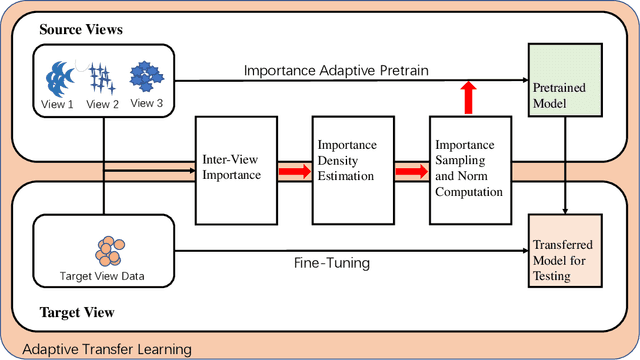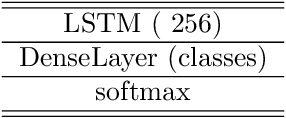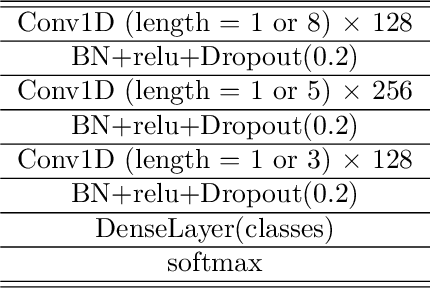Dongli Xu
Align Your Rhythm: Generating Highly Aligned Dance Poses with Gating-Enhanced Rhythm-Aware Feature Representation
Mar 21, 2025Abstract:Automatically generating natural, diverse and rhythmic human dance movements driven by music is vital for virtual reality and film industries. However, generating dance that naturally follows music remains a challenge, as existing methods lack proper beat alignment and exhibit unnatural motion dynamics. In this paper, we propose Danceba, a novel framework that leverages gating mechanism to enhance rhythm-aware feature representation for music-driven dance generation, which achieves highly aligned dance poses with enhanced rhythmic sensitivity. Specifically, we introduce Phase-Based Rhythm Extraction (PRE) to precisely extract rhythmic information from musical phase data, capitalizing on the intrinsic periodicity and temporal structures of music. Additionally, we propose Temporal-Gated Causal Attention (TGCA) to focus on global rhythmic features, ensuring that dance movements closely follow the musical rhythm. We also introduce Parallel Mamba Motion Modeling (PMMM) architecture to separately model upper and lower body motions along with musical features, thereby improving the naturalness and diversity of generated dance movements. Extensive experiments confirm that Danceba outperforms state-of-the-art methods, achieving significantly better rhythmic alignment and motion diversity. Project page: https://danceba.github.io/ .
Band Prompting Aided SAR and Multi-Spectral Data Fusion Framework for Local Climate Zone Classification
Dec 24, 2024Abstract:Local climate zone (LCZ) classification is of great value for understanding the complex interactions between urban development and local climate. Recent studies have increasingly focused on the fusion of synthetic aperture radar (SAR) and multi-spectral data to improve LCZ classification performance. However, it remains challenging due to the distinct physical properties of these two types of data and the absence of effective fusion guidance. In this paper, a novel band prompting aided data fusion framework is proposed for LCZ classification, namely BP-LCZ, which utilizes textual prompts associated with band groups to guide the model in learning the physical attributes of different bands and semantics of various categories inherent in SAR and multi-spectral data to augment the fused feature, thus enhancing LCZ classification performance. Specifically, a band group prompting (BGP) strategy is introduced to align the visual representation effectively at the level of band groups, which also facilitates a more adequate extraction of semantic information of different bands with textual information. In addition, a multivariate supervised matrix (MSM) based training strategy is proposed to alleviate the problem of positive and negative sample confusion by completing the supervised information. The experimental results demonstrate the effectiveness and superiority of the proposed data fusion framework.
FastDrag: Manipulate Anything in One Step
May 24, 2024Abstract:Drag-based image editing using generative models provides precise control over image contents, enabling users to manipulate anything in an image with a few clicks. However, prevailing methods typically adopt $n$-step iterations for latent semantic optimization to achieve drag-based image editing, which is time-consuming and limits practical applications. In this paper, we introduce a novel one-step drag-based image editing method, i.e., FastDrag, to accelerate the editing process. Central to our approach is a latent warpage function (LWF), which simulates the behavior of a stretched material to adjust the location of individual pixels within the latent space. This innovation achieves one-step latent semantic optimization and hence significantly promotes editing speeds. Meanwhile, null regions emerging after applying LWF are addressed by our proposed bilateral nearest neighbor interpolation (BNNI) strategy. This strategy interpolates these regions using similar features from neighboring areas, thus enhancing semantic integrity. Additionally, a consistency-preserving strategy is introduced to maintain the consistency between the edited and original images by adopting semantic information from the original image, saved as key and value pairs in self-attention module during diffusion inversion, to guide the diffusion sampling. Our FastDrag is validated on the DragBench dataset, demonstrating substantial improvements in processing time over existing methods, while achieving enhanced editing performance.
Revisiting AP Loss for Dense Object Detection: Adaptive Ranking Pair Selection
Jul 25, 2022



Abstract:Average precision (AP) loss has recently shown promising performance on the dense object detection task. However,a deep understanding of how AP loss affects the detector from a pairwise ranking perspective has not yet been developed.In this work, we revisit the average precision (AP)loss and reveal that the crucial element is that of selecting the ranking pairs between positive and negative samples.Based on this observation, we propose two strategies to improve the AP loss. The first of these is a novel Adaptive Pairwise Error (APE) loss that focusing on ranking pairs in both positive and negative samples. Moreover,we select more accurate ranking pairs by exploiting the normalized ranking scores and localization scores with a clustering algorithm. Experiments conducted on the MSCOCO dataset support our analysis and demonstrate the superiority of our proposed method compared with current classification and ranking loss. The code is available at https://github.com/Xudangliatiger/APE-Loss.
Adaptive Transfer Learning of Multi-View Time Series Classification
Oct 14, 2019



Abstract:Time Series Classification (TSC) has been an important and challenging task in data mining, especially on multivariate time series and multi-view time series data sets. Meanwhile, transfer learning has been widely applied in computer vision and natural language processing applications to improve deep neural network's generalization capabilities. However, very few previous works applied transfer learning framework to time series mining problems. Particularly, the technique of measuring similarities between source domain and target domain based on dynamic representation such as density estimation with importance sampling has never been combined with transfer learning framework. In this paper, we first proposed a general adaptive transfer learning framework for multi-view time series data, which shows strong ability in storing inter-view importance value in the process of knowledge transfer. Next, we represented inter-view importance through some time series similarity measurements and approximated the posterior distribution in latent space for the importance sampling via density estimation techniques. We then computed the matrix norm of sampled importance value, which controls the degree of knowledge transfer in pre-training process. We further evaluated our work, applied it to many other time series classification tasks, and observed that our architecture maintained desirable generalization ability. Finally, we concluded that our framework could be adapted with deep learning techniques to receive significant model performance improvements.
 Add to Chrome
Add to Chrome Add to Firefox
Add to Firefox Add to Edge
Add to Edge